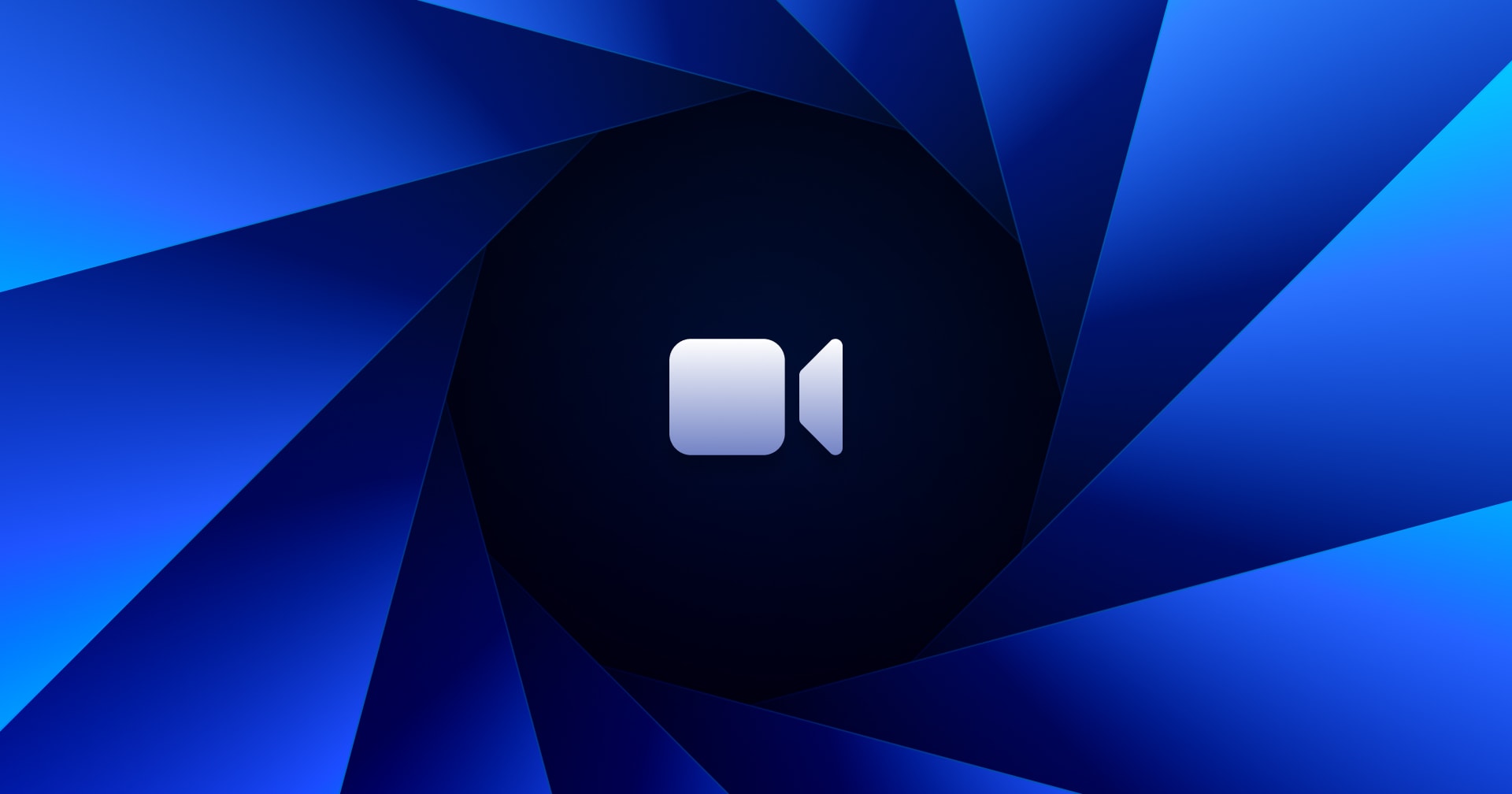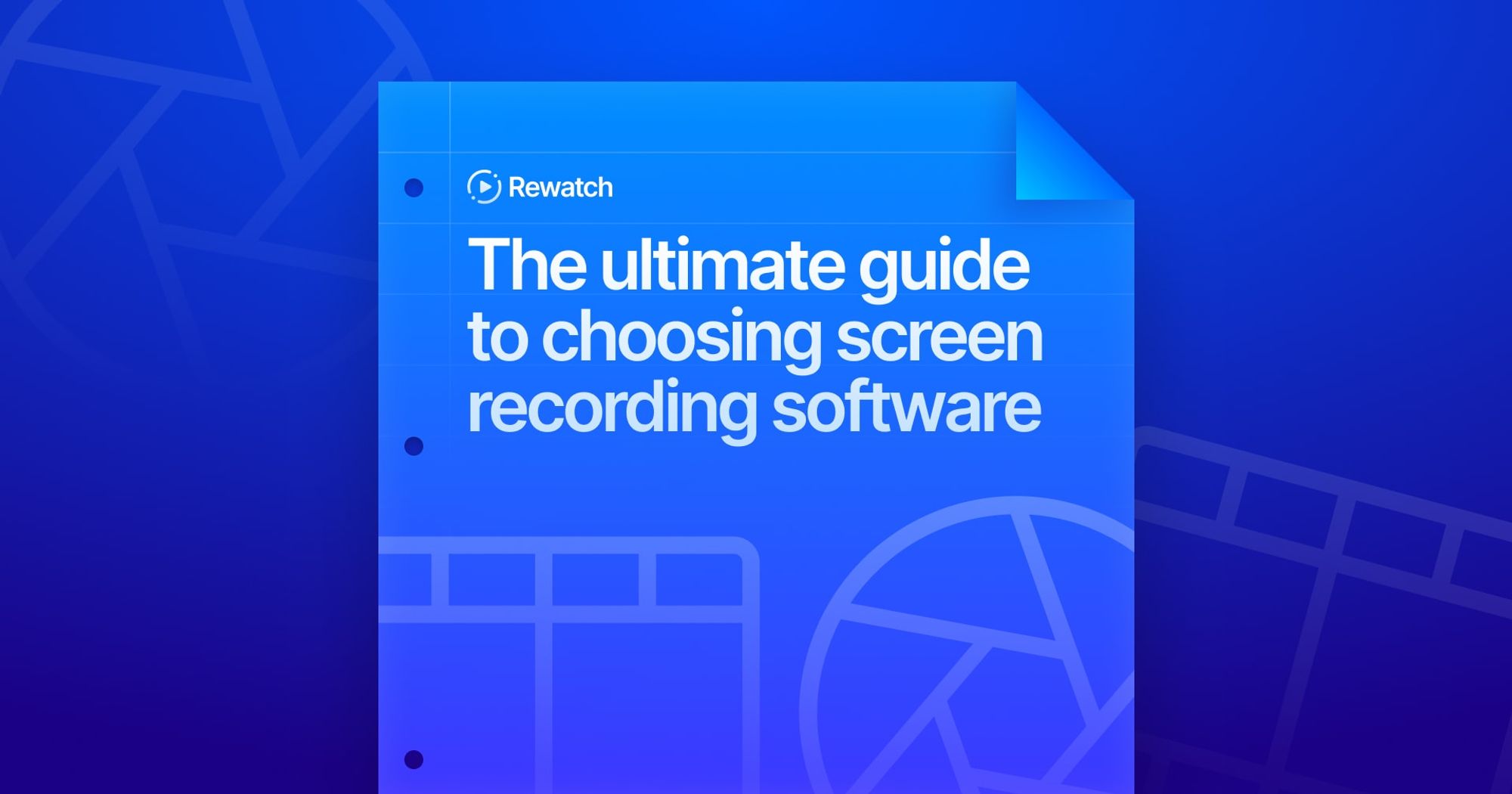5 Reasons video is the ultimate communication medium
Learn how integrating video can humanize interactions, build trust, and create a dynamic knowledge base.
By Liz Childers in

As any remote or hybrid team knows, video is the new office space. It’s the primary way we connect with our colleagues — which means it’s also how we source and store information.
While that alone is powerful, video has even more to offer. If you’re only using video for meetings with your team, then you’re only starting to scratch the surface of its utility.
At Rewatch, we’ve integrated video into every part of our collaborative workflow. All of our conversations are recorded and cataloged. Our videos are transcribed, searchable, and summarized by AI. Team members can be tagged or can subscribe to different topics and automatically receive updates on only the most relevant moments.
We think this is the direction that video is going. Here are a few more ways video is demonstrating itself to be the superior medium — along with more details on how we utilize it to create high-bandwidth knowledge that is consumable, accessible, and keeps our many teams aligned and informed without having to physically “be there” for every interaction or meeting to gain full visibility:
It takes the guesswork out of communication
In the age of digital work, great communication has largely been dependent on writing skills. Think of all the time you’ve spent crafting and recrafting the perfect email or a time you got an email and wondered if the person who wrote it was upset at you.
Before this, however, modern workers with good communication skills were those that could communicate ideas verbally. Verbal communication embraces tone and, most often, relies heavily on physical cues. These nuances are lost in written communication; video has reintroduced this.
Now, you can once again be a great communicator by sending a video message — and eliminating the time it takes to write a truly great email. Video levels the playing field by providing additional context where other mediums fall short: your tone is obvious, and your body language tells its own story. Sending messages this way is inherently more human, in a way an instant message isn’t. So much meaning is missed when you can’t hear someone’s voice — is there urgency there, or do they seem relaxed about the request?
Video is a great way to capture the full intent of the message and remove any contextual doubts when it comes to communication, which saves both sender and recipient a lot of time, trouble, and rumination around what was and wasn’t meant to be conveyed.
It makes collaboration richer
Because video conveys the nuances of communication, it is also more humanizing. In the workplace, that is invaluable: humanization builds trust, which makes collaboration between both colleagues and clients easier and more natural.
At Rewatch, we do something called “Weekend Updates,” where a few people voluntarily send a little video overview of how they spent their weekend using our TikTok-style Series recording feature. Each video is an authentic snapshot into the person’s world. Because these updates aren’t part of a standard meeting and are completely informal, they’re also more genuine. This is a way of getting to know each other a little better, even when we’re spread across the country. When we know each other better and we get to know our colleagues as humans, not just faces behind a desk, it makes our collaboration even richer.
The same can be said for interactions with customers. Customer Success teams have been analyzing sentiment for ages because it’s helpful data. But accurately relaying that sentiment to other teams is never easier than when there is video proof. A feature request might come in and get sent to the product team, and they won’t know whether it’s a necessity for clients or simply a fun idea. When Customer Success can share a recording of a customer describing a request themselves, then the whole company is at one degree of separation from the source of truth.
It makes us more inherently connected without the need for more meetings
Most of us crave some form of communication with colleagues — going a few days without seeing someone’s face can feel quite isolating. However, remote and hybrid workers are also suffering from meeting overload. The number of meetings attended by workers on average increased by 13.5% since the pandemic, according to the Harvard Business Review (even though “new research shows that about 70% of all meetings keep employees from working and completing all their tasks”).
The kind of community-building workers crave from meetings can still take place asynchronously by sending video back and forth as the primary method of communication or by making meeting recordings available to people who cannot attend. This style of async video communication allows workers to connect and share information when it makes sense for their own workflow. Plus, you can get the gist of what your boss needs to share, sped up to 2x speed, saving even more time. In other words, we don’t need to fill up our schedules with meetings just because we crave a more human connection with our colleagues or extra facetime out of loneliness!
Video enables you to engage in conversations you weren’t part of
While it’s nice to be able to skip meetings and catch up later, it can often feel like an extra workload to return from vacation and scrub through the all-hands recorded while you were out.
It is crucial to catch up on the information shared so that you can be informed, but it can also feel like an exercise in looking backward rather than building towards the future since, with traditional video platforms, all you can do is watch what’s happened in the past without being able to impact the knowledge that was generated.
With Rewatch, everyone has the ability to engage back with the conversation, whether they were there “live” or not. Being able to build on conversations that already happened through commenting, tagging, emoji reactions, posing questions, sharing relevant links, and more, means work is always collaborative and inclusive while also building towards future work, never just looking back.
It’s also important that recorded video meetings or async video updates are dynamic, and Rewatch users can embed slides, documents, or project boards into any recording. This is crucial to creating a collaborative workspace — and doing so much more than just recording videos. Anything that fuels a conversation should be available all in one place and readily able to add context for anyone looking for more information on the topic at hand.
It creates a lossless, real-time knowledge base
Capturing and updating knowledge in a workplace is one of the most time-consuming tasks, and it’s one that quite literally never ends. This might be why the company wiki can feel like both a resource and a burden: it’s full of information that’s necessary to archive but ultimately unactionable alongside current priorities given the immense amount of time and manual effort it requires to maintain. And even then, these traditional knowledge management tools focus on what’s already happened rather than the reality of what’s happening now. Everything is always out of date.
Rewatch’s video hub serves as an automated hosting and sharing platform for meeting recordings, async updates, searchable transcripts, collaboration conversations, and all docs that are embedded to these videos. Rather than relying on meeting notes that reflect people’s biases, styles, and perceptions or asking team members to film and upload videos that will quickly become stale, this style of company wiki can dynamically scale with your organization. Everything right down to a smile on the founder’s face is accessible. Ultimately, this means that video creates real-time knowledge bases that are formed by reality.
Because this type of video utility provides a lossless knowledge base, in the future, we predict that every workflow will have an aspect of video to it. It won’t just be a platform for meetings, but rather a space you can share with others in order to enable and accelerate collaboration through communications that are more inspired, human, and connected. What will help video become truly ubiquitous is a powerful integration strategy, like the one we have at Rewatch, which ensures video data capture happens wherever you work — whether that’s on mobile, desktop, or across your favorite integrated productivity tools.
That’s how video shifts from a tool to a state of being.
Ready to empower your team with more productive and collaborative knowledge sharing? Get started with Rewatch today.
Insights for the modern workplace
Get fresh ideas and practical tips to help your team work better, together. Delivered straight to your inbox.

